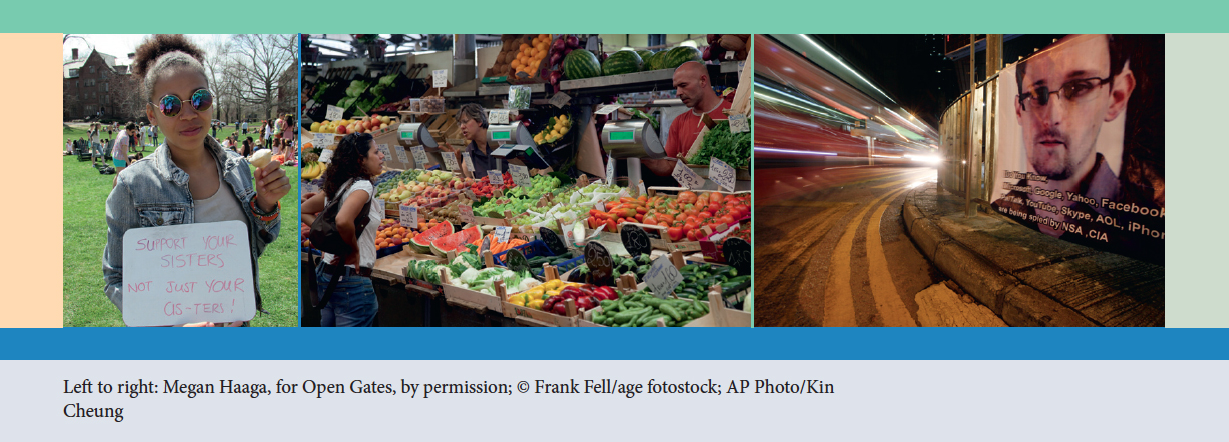How Does Popular Culture Stereotype You?
23
How Does Popular Culture Stereotype You?
507

Check the dictionary, and you’ll learn that the term stereotype originally referred to a printing plate cast in metal from the mold of a page of set type. Although English borrowed the word from French, its parts are ultimately of Greek origin: stereo means “solid” or “three-dimensional” while type means “model.” By extension, the word has come to mean a widely held image that is fixed, allowing for little individuality among a group’s members. Ironic, isn’t it, that a term that originally referred to a three-dimensional printing plate has come to refer to a one-dimensional representation of an entire group?
The selections in this chapter focus on stereotyping in popular culture, including the media, challenging you to analyze what many would consider to be unsavory or unfair stereotypes of various groups found there. The chapter opens with a selection about stereotypes and little girls. “Little Girls or Little Women? The Disney Princess Effect,” an article from 2011, examines the ways that, once little girls discover Disney Princesses, a line of merchandise based on the animated films, their understanding of themselves often changes in ways many parents and social scientists find troubling.
508
The chapter’s selection focusing on making a visual argument examines stereotypes about gender (including Barbie dolls), generational differences, gun control, and racial profiling of African American men that are simultaneously mocked and perpetuated in recent cartoons. As you study these cartoons carefully, give some thought to the ways that humorous arguments like these permit our society to deal indirectly with controversial issues. You will likewise want to consider the stereotypes that don’t show up here, whether they are simply too potentially explosive or whether the editors may not have felt comfortable reproducing them for fear of unwanted controversy.
In the third selection, Amy Stretten, a Native American, argues that appropriating Native American imagery honors little more than prejudice itself. It’s worth noting that public attitudes about this topic continue to shift away from the acceptability of such imagery, reminding us that attitudes toward stereotypes change — and can change in a short period of time.
The fourth selection, the preface to a book by Charles A. Riley II, focuses passionately on how people with disabilities are — and aren’t — represented in the media and popular culture. In addition to his take on these problems, we include a set of guidelines from the National Center on Disability and Journalism that offers advice about how media might do a better job than they currently do in this regard. We’ve found this advice helpful in our writing.
Next, a selection from Claude M. Steele’s important 2010 book Whistling Vivaldi and Other Clues to How Stereotypes Affect Us examines what researchers term “stereotype threat,” the way that our fear of being stereotyped often influences our actions. Steele, a psychologist, coined this term.
In the sixth selection, an excerpt from a research study, psychologist Melinda C. R. Burgess and four colleagues investigate the prevalence and consequences of racial stereotyping in video games.
The chapter closes with Amy Zimmerman’s discussion of the stereotyped ways that television represents individuals who identify as bisexual, a topic we wouldn’t have considered a few editions back, partly because bisexuals weren’t represented, even in stereotyped ways, on TV.
Originally, stereotypes were part of a printer’s trade, enabling the printer to disseminate information quickly and cheaply. No less a part of popular culture today, stereotypes of a different sort still disseminate information. You’ll have to evaluate how much that information is worth.